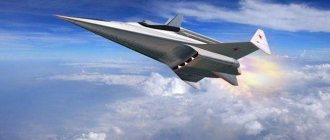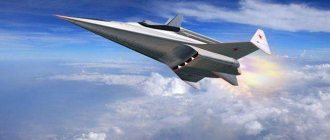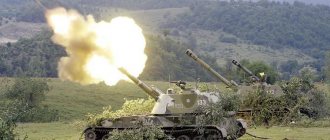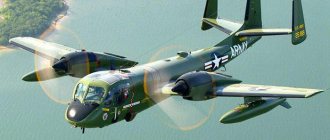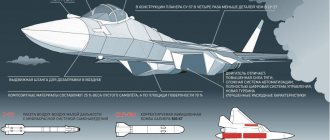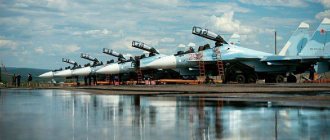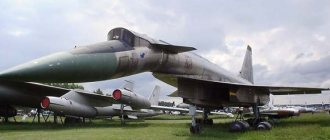| Su-31 | |
| Type | Sports plane |
| Developer | Sukhoi Design Bureau |
| First flight | 1992 |
| Status | Operated |
| Basic model | Su-26 |
| Images on Wikimedia Commons | |
Su-31Su-31
Su-31
- a sports aerobatic aircraft developed by the Sukhoi Design Bureau.
Story
The Su-31 is a development of the Su-26M aircraft using solutions developed during the development of the Su-29. It differs from the Su-26M, which is very similar in appearance, to an even greater use of composite materials in the airframe design (~70% versus ~50%), slightly reduced dimensions of the rearranged fuselage and 30 kg less weight. When installing the M-14PF engine (400 hp), developed by the Motor Building Design Bureau, Voronezh, the aircraft’s thrust-to-weight ratio began to reach one, which allows it to perform “helicopter” hovering.
The aircraft made its first flight in June 1992, and in July of the same year it made its debut at the World Aerobatics Championship in Le Havre (France). The Su-31 was first demonstrated at the Farnborough-92 aerospace exhibition, then at all major air shows. These aircraft have been used by the Russian national aerobatics team to perform very successfully at the European and World Championships since 1994.
A fighter ahead of its time
For Russia, the issue of ensuring the strategic security of our state in the northern direction and protecting the country’s interests in the Arctic region is becoming increasingly relevant. The struggle for the Arctic is geopolitical in nature, since there really is something to protect there: according to the UN, oil reserves in the Arctic amount to 90–100 billion tons. This figure exceeds the resources of Russia and Saudi Arabia combined and explains why, in the context of climate change, the Arctic is becoming a zone of conflict of interests of world powers. The Arctic is not only rich in energy resources: the region produces almost half of the world's fish production. Also, the development of commercial shipping along the Northern Sea Route between the Atlantic and Pacific oceans creates enormous economic prospects as the ice melts. The most important enterprises of the Russian defense industry, Northern Fleet bases and military infrastructure facilities are located in the Arctic zone. In addition, the state border of our country runs along the Arctic Ocean for 20 thousand kilometers.
In 2008, the President of Russia approved the “Fundamentals of the state policy of the Russian Federation in the Arctic for the period until 2022 and beyond.” Given the country's course towards a permanent naval presence in the Arctic and defense of its status as a leading Arctic power, President Vladimir Putin called for special attention to be paid to the deployment of military units and infrastructure in the Arctic.
At the same time, the state of Russian aerospace defense is causing serious concern. Parliamentary hearings held by the State Duma Defense Committee jointly with the Communist Party faction in April and November 2013 on the state and problems of improving the combat capabilities of the Aerospace Defense Forces, as well as on the use of MiG-31 aviation complexes in the country's East Kazakhstan region showed the presence of serious problems in ensuring national security Russia.
The most important of them is the collapse of the aviation component of the aerospace defense system, the basis of which is the MiG-31 supersonic long-range fighter-interceptor. Under various pretexts, these planes are hastily destroyed.
Best in all respects
An analysis of the open military programs of the leading countries of the world allows us to say that today there is no aviation complex in the world, and in the next 10–15 years, comparable to this aircraft in terms of speed, rate of climb, service ceiling and other flight characteristics, as well as in terms of effectiveness in a given range of its combat use.
The MiG-31 is designed to intercept and destroy cruise missiles in the entire range of altitudes and flight speeds accessible to aerodynamic aircraft (including cruise missiles flying low-altitude in terrain-following mode), low-flying satellites, stealth aircraft, and other air targets of any type at extremely low, low, medium and high altitudes, day and night, in simple and adverse weather conditions, when the enemy uses active and passive radar interference, as well as false thermal targets.
It is a high-wing aircraft with a trapezoidal wing, a two-fin tail and an all-moving stabilizer. To increase stability, two additional ventral fins are installed on it. Due to the high heating of the aircraft skin when flying at supersonic speeds, the airframe structure is made mainly of heat-resistant steels and titanium alloys (50 percent stainless steel, 16 percent titanium, 33 percent aluminum and one percent other structural materials).
The aircraft has a three-post landing gear, the nose strut is equipped with two pneumatic tires, and the main struts are designed as two-wheeled trolleys. The doors of the niches of the main pillars are used as brake flaps. To reduce the aircraft's mileage during landing, a brake parachute container is installed in the rear fuselage.
The Zaslon radar installed on the aircraft provides the ability to detect air targets at a distance of 200 kilometers, track targets of the strategic bomber class - 200 kilometers, and fighter class targets - 120 kilometers.
It is also possible to detect small targets against the background of the ground, which allows the fighter to be used to combat cruise missiles. At the same time, simultaneous tracking of up to ten targets and simultaneous guidance of guided missiles at four targets is provided.
For covert search and tracking of targets, a heat direction finder can also be used, the sensors of which are placed in a semi-recessed position under the forward part of the fuselage and are extended into the working position during flight.
The aircraft is equipped with a modern set of radio navigation equipment, a digital closed communication system and a data display system on the windshield of the pilot's cockpit. To intercept small-sized targets, it is armed with a built-in six-barrel GSh-23-6 cannon with a caliber of 23 millimeters (ammunition capacity - 260 rounds, rate of fire - 8000 rounds/min). The gun is installed under the fuselage and is covered by a fairing in the non-combat position.
The main armament consists of long-range air-to-air guided missiles. Typically, four missiles are suspended in a semi-recessed position under the fuselage and two on pylons under the wing consoles. These can be missiles R-27, R-30, R-33, R-40T, R-40D, R-60M.
The power plant for the MiG-31 is powerful, highly economical D-30F6 bypass turbojet engines, which develop 15,500 kilograms of afterburner thrust. The fuel capacity in the internal fuel tanks is 16,350 liters; fuel tanks with a total capacity of 4,000 liters can be suspended. The MiG-31B modification aircraft is equipped with an in-flight refueling system.
The MiG-31 is capable of crossing the sound barrier in level flight and in climb mode, while most supersonic aircraft cross the M=1 speed in a shallow dive. Moreover, the MiG-31 can reach supersonic speed at medium and high altitudes without turning on the afterburner. But this property is believed to be possessed only by fifth-generation fighters.
At low altitudes, supersonic flight is comfortable for the MiG-31 pilot. The aircraft in this mode is quite stable and is not prone to bumpiness, which is common for aircraft whose wings are optimized for subsonic air combat. For example, the same Su-27 (as well as MiG-29, F-15, F/A-18, Rafale, etc.) near the ground, even at high transonic speeds, can fly for only a few minutes.
In terms of aerodynamics, the Su-35S differs little from the Su-27 and, therefore, is inferior to the MiG-31 in terms of climb rate at high speeds and the ability to pass the sound barrier. You can put a perfect control system on the plane, equip it with new long-range air-to-air missiles, but for a real interceptor this is not enough - the interceptor must be able to reach the attack line in the shortest possible time. The T-50, like the Su-35S, is more focused on air combat than interception.
All modern fighters (except for fifth-generation aircraft) are not fully supersonic, since their supersonic flight time is limited to 5–15 minutes due to various limitations in the airframe design. The duration of the MiG-31's supersonic flight is limited only by its fuel supply.
Machine History and Application
In 1977, test pilot Alexander Fedotov set an absolute world flight altitude record on the MiG-31 - 37,650 meters. In total, 29 world records were set on this type of aircraft.
Production of the MiG-31 began in 1981 in the city of Gorky (now Nizhny Novgorod). By the end of 1994, more than 500 of these machines were built, after which their production was curtailed.
The appearance of the MiG-31 in units led to a significant change in the tactics of foreign aviation and the air situation in general in those areas where military aircraft had previously repeatedly violated Soviet airspace and allowed themselves to “get on the nerves” of both the air defense and the crews of civilian ships and military courts.
During numerous exercises, the tactics of group actions of four MiG-31s were worked out, interconnected by encrypted communication channels, exchanging information and targeting individual aircraft included in the group. This tactic allows a group of four MiG-31 aircraft to control airspace over a frontal area of up to a thousand kilometers. It is also possible to use the MiG-31 as a leader to coordinate the actions of interceptor fighters with less powerful electronic equipment.
The aircraft's target equipment and weapons ensure the detection and destruction of air targets at ranges of up to 200 kilometers, depending on the angle from which the attack is carried out and the effective reflective surface of the target. The MiG-31 is equipped with data transmission equipment (DTA), which allows the exchange of information between interceptors within a detachment, between the leading aircraft of the detachments and between the leading aircraft and the ground control command in real time in an automatic (without the intervention of the navigator) mode.
In practice, this means partial secrecy of combat use. Quite often, the enemy detects an attacking aircraft not by turning on its own on-board radar, but by recording the radar signal of the attacking aircraft. If an attack is carried out by a squad or pair of MiG-31s, the search for a target using radar can be carried out by one interceptor, and missile launches by another (or others). Thus, the enemy remains in the dark for some time about where and when the missile will arrive, and may not have time to jam or perform an anti-missile maneuver.
Thanks to the APD, anti-missile maneuvers performed by the enemy are easily neutralized. The presence of the ADF in combination with the advanced Zaslon radar allows the MiG-31 to destroy jamming aircraft with a high probability. In most cases, interference is directed towards a working radar. It is more difficult to jam four radars operating in unison, if only because of the need to quadruple the jamming power. In practice, the jamming transmission power does not increase, but the effective jamming range decreases, and the operation of the MiG-31 radar at different frequencies forces us to further reduce the jamming signal power due to the need to expand the transmission frequency range. It is more difficult to monitor the transition of operating radars from one frequency to another in the case of four interceptors - the crews have time during which the interference does not affect. The time is seconds, but they are enough for a successful launch of the R-33. Finally, the jammer’s coordinates can be determined by simple direction finding from four MiG-31s, and then the options for hitting the target can be different.
The jammer is a target of the highest priority, since such an aircraft is capable of not only disrupting attacks, but most importantly, hiding the battle formation of attack aircraft. Destroying the jammer is the first step towards destroying the entire group of enemy aircraft. In our Air Force, only the MiG-31 can effectively perform such a task.
During the design work, a number of modifications to the production aircraft were created, significantly increasing its performance:
MiG-31B – interceptor fighter with air refueling; MiG-31D – single-seat fighter with anti-satellite missile; MiG-31F (E) - multi-role front-line fighter; MiG-31E is a long-range fighter-interceptor.
Work on the deep modernization of the MiG-31 interceptor, begun in 1984, led to the creation of the MiG-31M - a modernized fighter-interceptor with new avionics, engine and weapons, allowing for the reliable interception of stealth aircraft and cruise missiles flying on small and ultra-small aircraft. altitudes It became the pinnacle of the development of military aviation in the USSR; a number of information about it is still classified. Combat units today do not even dream about the combat effectiveness of the MiG-31M.
Advantages of the MiG-31M over other fighter aircraft in the world:
The MiG-31M's maximum speed is at least 500 kilometers per hour ahead of all similar aircraft in the world; the maximum combat load is six tons more than that of the MiG-31; the suspension of R-37 missiles on the MiG-Z1M is semi-recessed and practically does not impair the aerodynamics of the aircraft, which allows it to reach a maximum design speed of 3000 kilometers per hour and an altitude of 20–22 kilometers, and also increases the flight range in supersonic mode; for other fighter aircraft with the specified or similar missiles, the maximum speed is no more than 2000 kilometers per hour and the altitude is three to five kilometers less, as a result of which the energy imparted to the missile when launched from such a carrier is less than that of the MiG-Z1M, in three times, which significantly reduces the missile’s flight range; in a duel situation, this makes it possible to destroy enemy aircraft without the risk of one’s own destruction due to the greater range of missiles launched from a greater altitude and at greater speed.
Turned out to be unnecessary
In the second half of the 80s, an installation batch of MiG-31M was built for aviation in the amount of six prototypes. In March 1992, at the Machulishchi airbase near Minsk, the MiG-31M was shown to the military-political leadership of Russia and some CIS countries. In April 1994, the Mikoyan Design Bureau received a telegram from the Russian President with congratulations to both the company itself and its subcontractors involved in the MiG-31M development program on the successful completion of the tests. This meant the launch of a missile from this aircraft, which flawlessly hit a target at a distance of more than 300 kilometers, which is still inaccessible to any interceptor in the world. In August 1995, the car briefly appeared at the MAKS-95 air show in Zhukovsky and received excellent responses.
But Russia in the 90s did not need such an aircraft. The MiG-31M did not go into production. Production of other machines of this type was stopped. In addition, the shares of the Perm Motor Plant (PMZ), which produced engines for it, ended up in the possession of the Americans - the plant stopped producing such power plants.
Of the 500 vehicles produced, about a hundred remain in service to date. At the same time, one of the reasons for the cessation of production and modernization of the MiG-31 is the lack of unique high-power D-30F6 engines, developed specifically for this aircraft by the design bureau of Aviadvigatel OJSC and previously produced by the Perm Engine Plant.
Our inspection showed that the data about the absence of engines does not correspond to reality. It turned out that there are over 600 such engines at the PMZ and storage bases, the technical condition of which, after restoration, will allow for the modernization and production of at least 300 aircraft of this type, ensuring the operational life provided for by the technical parameters for a period of 15–20 years. At the aircraft manufacturing plant in the Nizhny Novgorod region and at the aircraft repair plants, production capacities, technological infrastructure, personnel and documentation necessary for the resumption of work have been preserved. According to experts, all this will reduce by more than a third the time and overall production costs of restoring long-range fighter-interceptors, which are so necessary for the protection of aerospace borders.
Options
In 1997, work began on upgrading the MiG-31 fighter-interceptor into the MiG-31BM multi-role aircraft, which has significantly increased combat capabilities and carries high-precision weapons to destroy both air and ground targets. Due to the modernization of avionics and weapons, the efficiency of the MiG-31BM compared to the MiG-31 increased by 2.6 times.
The MiG-31BM airborne radar is capable of detecting standard air targets at almost twice the distance. The detection range of air targets has been increased to 320 kilometers. During the tests, the ability to destroy enemy aircraft in long-range missile combat at a distance of about 280 kilometers was demonstrated, which is currently inaccessible to any foreign fighter. Airborne radar system? The MiG-31BM is capable of tracking up to ten air targets, six of which can be simultaneously fired at by R-33S or R-37 missiles. The ability to intercept targets flying at six times the speed of sound has been achieved, and other characteristics of the complex have been improved. State tests of the modification of the MiG-31BM complex were completed in 2012.
It is also appropriate to recall the modification of the MiG-31D as an anti-satellite missile carrier. After the collapse of the USSR, work on this topic ceased. The resumption of this program at a new technological and scientific level can turn the aircraft into an important element of anti-missile and anti-space defense.
It is also necessary to keep in mind that the MiG-31 aviation complex with an in-flight refueling system and its unique ability to “collect” radar information about the air situation, exchange it with other aircraft, and control weapons, like no other modern fighter, is suitable for solving tasks of escorting long-range strategic missile carriers and overcoming enemy air defenses. In order to most fully realize the combat capabilities of the MiG-31 when escorting long-range bombers, one should also think about the mutual exchange of data between strategic missile carriers, tanker aircraft and fighters. This will already be an aviation complex consisting of nuclear weapons carriers, their cover forces and support in the air.
Experts' opinion
Based on the above and other available data, it can be stated that the statements of many aviation specialists about the uniqueness of the MiG-31 are based on reality. A number of key flight performance characteristics of the aircraft and its already created modifications, either today or in the next decade, most likely, will not be surpassed in a complex either in Russia or abroad in the following parameters:
1. Supersonic cruising flight – V=2500 km/h (2.32 M), maximum speed – V=3000 km/h (2.82 M). For information: the T-50's supersonic cruising flight speed is expected to be no more than 1,800 km/h; the Su-35 can only perform short-term (about 15 minutes) supersonic flight at speeds of up to 2,500 km/h.
2. Load capacity - nine to ten tons (Su-35, T-50 - about eight).
3. Overcoming the sound barrier while climbing (Su-35, T-50 cannot).
4. Static ceiling - 20.6 kilometers (Su-35 - 18 km, T-50 - 20 km), dynamic ceiling - 25 kilometers.
It should be noted that in terms of maximum speed and ceiling, the MiG-31 surpasses not only the Russian Su-35S and T-50, but also foreign aircraft F-22, F-35, Typhoon and Rafal.
According to experts, MiG-31 type aircraft will be unrivaled for at least the next 15 years when performing the following tasks:
interception (reaching the attack line in the shortest possible time) and destruction of air, ground and surface carriers of cruise missiles; detection and destruction of low-flying targets (UAVs, cruise missiles, etc.); rapid deployment of air defense in unprotected areas; efficient equipping with state-of-the-art antenna systems without disrupting aerodynamics thanks to the “square” fuselage; escort and cover of the aviation component of the nuclear triad (strategic missile carriers); destruction of enemy satellites, prompt launch of satellites and satellite constellations weighing up to 200 kilograms into orbits of 200–800 kilometers (MiG-31D, MiG-31S, MiG-31I, project “Ishim”); only one aircraft in the world - the MiG-31 - is potentially capable of accelerating to the minimum speed required to launch a GZLA (without a special rocket booster). According to experts, it is possible to transport two or three combat GZVs weighing 1.2–1.5 tons. In this case, an acceleration stage is not required, due to which the flight range of such a combat GZV can increase two to three times, depending on the dimensions and weight of the warhead.
According to aviation specialists, military scientists and experts, the MiG-31 aircraft, having enormous modernization potential, is the most promising for consideration as a base aircraft for solving aerospace defense missions, a strategic reconnaissance aircraft, a long-range strike aircraft, and an operational means of launching small satellites into low-Earth orbits. for various purposes, etc. This is confirmed by numerous works of the 2nd Central Research Institute of the RF Ministry of Defense, the Research Institute of the RF Ministry of Defense and the Research Institute of Civil Departments.
Taking into account the above, in order to increase the effectiveness of the aerospace defense system, it seems advisable to make a decision to begin R&D to create a new aircraft model based on the MiG-31 and include in the State Armament Program for 2016–2025 a section “R&D for the creation of a promising aircraft - a long-range interception complex based on the aircraft MiG-31 for solving aerospace defense problems." Taking into account new technologies of materials, development of engine construction, and avionics, the combat effectiveness of this vehicle can be very high.
In addition, I believe it is necessary to modernize the existing fleet of MiG-31 aircraft before adopting new aircraft with better flight performance and combat capabilities. It is advisable to use existing MiG-31M aircraft and their engines as prototypes and flying laboratories for aerodynamic research, testing propulsion systems, new structural materials, testing on-board systems, combat systems, etc.
Such solutions can ensure the supply of a unique, unparalleled combat system to the Russian Armed Forces to carry out aerospace defense missions in a relatively short period.
Flight performance
| Characteristic | Index |
| Manufacturer | Sukhoi Design Bureau |
| Engine | 1 PD M-14PF (M-14P) |
| Wingspan | 7.80 m |
| Length | 6.78 m |
| Height | 2.78 m |
| Wing area | 11.80 m² |
| Empty weight | 650 kg |
| Normal take-off weight | 780 kg |
| Crew | 1 |
| Maximum permissible speed: | 450 km/h |
| maximum level flight speed: | 380 km/h |
| Range of flight | 290 km |
| Maximum rate of climb | 1440 m/min (24 m/s) |
| Service ceiling | 4000 m |
| Max. operational overload | 12 |
Last changes
11.08.2020
The consideration of court case No. A41-6898/2020 dated 02/05/2020 in the appellate instance has begun. The organization is the plaintiff, the amount of claims is 386,860 rubles.
07.07.2020
The consideration of court case No. A41-6898/2020 dated 02/05/2020 in the first instance has been completed. The organization is the plaintiff, the amount of claims is 386,860 rubles.
23.03.2020
The consideration of court case No. A41-73484/2019 dated August 19, 2019 in the appellate instance has been completed. Organization as a defendant, the amount of claims is 255,480,342,220 rubles.
14.03.2020
The legal address has been changed from 141840, Moscow region, Dmitrovsky district, Ivantsevo village, building 28a to 141840, Moscow region, Dmitrov city, Ivantsevo village, building 28a
03.03.2020
The consideration of court case No. A41-108304/2019 dated December 19, 2019 in the first instance has been completed. The organization is the plaintiff, the amount of claims is 386,860 rubles.
05.02.2020
New court case No. A41-6898/2020 dated 02/05/2020 as a plaintiff, the amount of claims is 386,860 rubles.
04.02.2020
The consideration of court case No. A41-73484/2019 dated August 19, 2019 in the appellate instance has begun. Organization as a defendant, the amount of claims is 255,480,342,220 rubles.
23.01.2020
The consideration of court case No. A41-90631/2019 dated October 21, 2019 in the first instance has been completed. The organization is the plaintiff, the amount of claims is 386,860 rubles.
Links
Bombers/attack aircraft Su-2 (BB-1) • Su-7 • Su-17/Su-20/Su-22 • Su-24 • Su-25 • Su-25T • Su-39 • Su-34 Educational and sports Su-25UTG • Su-26 • Su-28 • Su-33UB • Su-29 • Su-31 • UTB Experimental ANT-25¹ • ANT-37¹ • P-1 • P-42 • Su-1 • Su-3 • Su-4 (BB-3) • Su-5 • Su-6 • Su-7 (1944) • Su- 8 • Su-9 (1946) • Su-10 • Su-11 (1947) • Su-12 • Su-15 (1949) • Su-17 (1949) • Su-28 • Su-37 • Su-47 « Berkut" • T-4 "Sotka" • ShB (BB-2) Civil Su-38 • Su-80 • Superjet 100 Projects KR-860 • MFP • Su-13 • S-54 • T-60 • Sh-90 (T-12) • SSBJ Notes: ¹ work under the general supervision of A. N. Tupolev
Popular modifications
Since the implementation of the MiG-31 project, a huge number of different variations of the aircraft have appeared. The most popular of them was the MiG-31BM. This multifunctional supersonic interceptor is capable of not only attacking targets at long ranges, but also carrying out reconnaissance thanks to the integrated new generation radar. A simplified version of the version is the MiG-31B.
Models letters “D” and “I” are designed for launching small satellites. MiG-31LL is an aerial laboratory. The 31M fighter has enhanced armament and is often used as a bomber. Models "FE" and "E" are export options.
An excerpt characterizing the Su-31
- It is quite possible that the theater of war will come so close to us... - Ha ha ha! Theater of War! - said the prince. “I said and say that the theater of war is Poland, and the enemy will never penetrate further than the Neman. Desalles looked with surprise at the prince, who was talking about the Neman, when the enemy was already at the Dnieper; but Princess Marya, who had forgotten the geographical position of the Neman, thought that what her father said was true. - When the snow melts, they will drown in the swamps of Poland. “They just can’t see,” said the prince, apparently thinking about the campaign of 1807, which seemed so recent. “Bennigsen should have entered Prussia earlier, things would have taken a different turn...” “But, prince,” said Desalles timidly, “the letter talks about Vitebsk...” “Ah, in the letter, yes...” the prince said dissatisfied, “yes... yes...” “His face suddenly took on a gloomy expression. He paused. - Yes, he writes, the French are defeated, which river is this? Desalles lowered his eyes. “The prince doesn’t write anything about this,” he said quietly. - Doesn’t he write? Well, I didn’t make it up myself. - Everyone was silent for a long time. “Yes... yes... Well, Mikhaila Ivanovich,” he suddenly said, raising his head and pointing to the construction plan, “tell me how you want to redo it... Mikhail Ivanovich approached the plan, and the prince, having talked with him about the plan for the new building, angrily Having looked at Princess Marya and Desalles, he went to his room. Princess Marya saw Desalles' embarrassed and surprised gaze fixed on her father, noticed his silence and was amazed that the father had forgotten his son's letter on the table in the living room; but she was afraid not only to speak and ask Desalles about the reason for his embarrassment and silence, but she was afraid to even think about it. In the evening, Mikhail Ivanovich, sent from the prince, came to Princess Marya for a letter from Prince Andrei, which was forgotten in the living room. Princess Marya submitted the letter. Although it was unpleasant for her, she allowed herself to ask Mikhail Ivanovich what her father was doing. “They’re all busy,” said Mikhail Ivanovich with a respectfully mocking smile that made Princess Marya turn pale. – They are very worried about the new building. “We read a little, and now,” Mikhail Ivanovich said, lowering his voice, “the bureau must have started working on the will.” (Recently, one of the prince’s favorite pastimes was working on the papers that were supposed to remain after his death and which he called a will.) - And Alpatych is sent to Smolensk? - asked Princess Marya. - Why, he’s been waiting for a long time. When Mikhail Ivanovich returned with the letter to the office, the prince, wearing glasses, with a lampshade over his eyes and a candle, was sitting at the open bureau, with papers in his far-off hand, and in a somewhat solemn pose was reading his papers (remarks, as he called them), which were to be delivered to the sovereign after his death. When Mikhail Ivanovich entered, there were tears in his eyes, memories of the time when he wrote what he was now reading. He took the letter from Mikhail Ivanovich’s hands, put it in his pocket, put away the papers and called Alpatych, who had been waiting for a long time.


